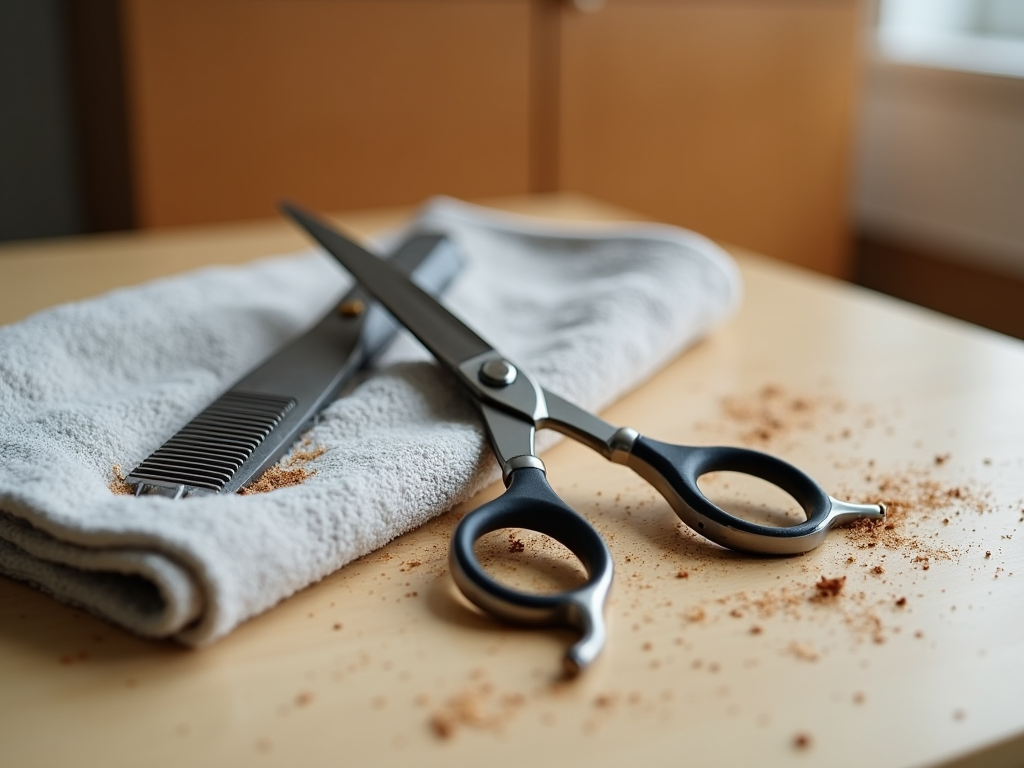
How to Cut Your Own Hair at Home for Gorgeous, Salon-Worthy Results
Cutting your own hair at home can be an empowering and rewarding experience. It allows you to save time and money while enabling you to explore your creativity. As you dive into this art, you’ll find that with the right approach and tools, achieving a stylish cut is not only possible but can also yield stunning results. Imagine standing before your mirror, equipped with nothing more than a pair of sharp scissors, a comb, and a vision. The secret lies in understanding the techniques and insights that professionals often utilize in their salons. By applying these principles, you too can walk away with a hairstyle that is both polished and refreshing.
Before jumping into the actual cutting, it’s essential to recognize that preparation is key. Techniques that might seem straightforward at first can quickly become overwhelming without a solid foundation. That’s why it’s crucial to start with the right environment and tools. Picture this: you are in a bright, clean space, all your tools within reach, and a clear vision of what you want to achieve. Having your setup organized will significantly ease the process and enhance your focus, reducing the likelihood of costly mistakes.
Preparation: What You’ll Need

Prior to starting your DIY haircut, you’ll want to familiarize yourself with both the tools and the process ahead. Gathering the necessary equipment not only boosts your confidence but also ensures that you’re ready for any unforeseen challenges that may arise. Below, you’ll find a list of essential tools you’ll need to make the journey smoother. Each item plays a vital role and can immensely contribute to achieving the desired outcome.
- Sharp hair scissors
- Hair clipper (if applicable)
- Comb or brush
- Two mirrors for a complete view
- Hair cutting cape or an old towel
- A spray bottle with water to dampen your hair
After ensuring you have your tools at hand, the next step is setting the stage for your haircut. Choosing an appropriate space is as important as the tools themselves. A well-lit area will allow you to see what you’re doing, while a comfortable chair will keep you relaxed throughout the cutting process. Creating this ideal environment ensures that your attention remains focused on achieving the best results possible.
Deciding on a Style

Understanding the haircut you want is crucial before you even pick up the scissors. A common mistake is diving into the cutting process without a clear idea, leading to potential dissatisfaction. Start by researching various hairstyles that align with your personal style. Use platforms like Pinterest and Instagram to gather visual inspiration. Consider factors such as your face shape and hair type; different hairstyles can dramatically change how your features are highlighted.
Once you collect a range of ideas, it’s wise to consider whether you’re looking for a significant change or just a maintenance trim. Many people make the opposite error by underestimating a simple hairstyle’s impact. Finding a balance means recognizing what features you wish to accentuate or soften. If you find the decision overwhelming, consulting with a professional stylist can offer valuable insight. Even if you choose to cut your own hair, a conversation with a stylist prior can guide your approach.
The Cutting Techniques
Once your hair is prepped and your style is decided, it’s time to delve into the actual cutting techniques. Each technique serves a different purpose, whether you want a basic trim or a more intricate layered look. Below is an introduction to some common techniques that can help you achieve your hair goals effectively.
| Technique | Description |
|---|---|
| Basic Trim | Section your hair and cut small amounts to avoid mistakes. |
| Layering | Creates volume by removing bulk from interior sections. |
| Bangs | Steps to cut bangs evenly, ensuring they blend with the rest of your hair. |
The basic trim is straightforward, requiring you to section your hair into manageable pieces. Aim to cut small amounts, allowing room for adjustments. For layers, understanding how to point-cut can create a softer, blended look. When it comes to bangs, measuring and cutting small sections will help ensure that one side doesn’t end up longer than the other. A steady hand and patience are your best friends during this process.
Finishing Touches
As you wrap up your haircut, the finishing touches can significantly enhance your overall look. One of the first steps in this final phase is cleaning up. Removing any stray hair from the floor and inspecting your cut for unevenness will ensure a polished appearance. Often, small adjustments might be necessary, so take a moment to check the back of your head using your mirror setup.
After ensuring everything looks good, it’s time to think about styling. The right products can elevate your new haircut, giving it the flair it deserves. Consider using lightweight styling creams, volumizers, or even some texturizing spray to add definition. How you style your hair can utterly change the vibe of a haircut, and it’s worth experimenting to find what complements your new look.
Conclusion
Cutting your hair at home can feel daunting, but with the right preparation and techniques, it becomes an achievable task. Remember, each haircut is a step in refining your style, allowing room for creativity and self-expression. By using the guidelines provided in this article, you can take pride in your work and enjoy the satisfaction of a well-executed haircut. With practice, you might even discover that the process becomes easier and more enjoyable with each attempt.
Frequently Asked Questions
- Can I really cut my own hair? Absolutely! Many people successfully cut their own hair with the right tools and techniques.
- How often should I trim my hair? It is generally recommended to trim your hair every 6-8 weeks, depending on your hair type and growth rate.
- What should I do if I make a mistake? Stay calm and, if necessary, consult a professional stylist to help fix any mistakes. You can also gradually trim away excessive length until you achieve the desired look.
- What if I’m not satisfied with the result? Give yourself time to adjust to the new style. Most haircuts look different once styled. However, if you’re still not satisfied, seek a professional cut.
- Are there any hairstyles I should avoid cutting myself? Generally, complex styles that require advanced techniques, like intricate layering or fades, are best left to professionals. Simple cuts and trims are usually manageable.
Reading time 7 minutesCutting your own hair at home can be an empowering and rewarding experience. It allows you to save time and money while enabling you to explore your creativity. As you dive into this art, you’ll find that with the right approach and tools, achieving a stylish cut is not only possible but can…